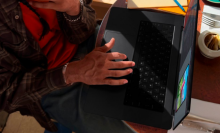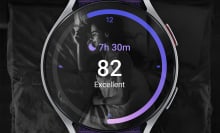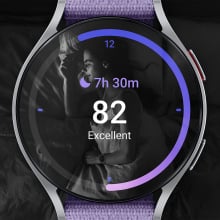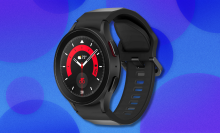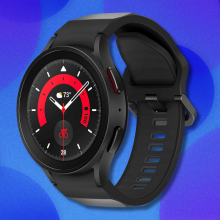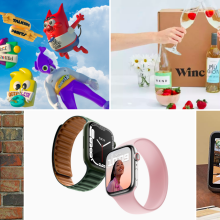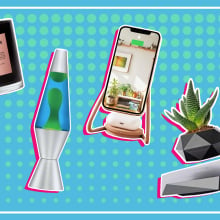Kids have the kind of energy adults could only dream of having. But like for the rest of us, movement can sometimes get overlooked — especially if there's a PlayStation or iPad with Youtube within arm's reach or there's not easy access to play outdoors. You might not think that a kid needs to track that activity (or the motivation to move around at all), but in a relatively sedentary society, making movement a priority from a young age is still vital.
Fitness trackers for kids can help foster a well-balanced lifestyle and introduce responsibility through reminders. The ones designed specifically for children in mind focus on leading an active lifestyle (rather than weight loss or something) as well as forming healthy non-fitness related habits, like building a bedtime routine or being responsible for chores.
What makes a fitness tracker kid-friendly?
Fitness trackers for kids are simplified versions of those for adults in that they typically trade out advanced metrics like an ECG app for motivational games and unlockable rewards. Most young kids probably don't need a $500 watch for light health metrics when a cheaper, simpler, more durable option is more suited to keep them engaged.
Band size is tailored to little wrists, of course, and typically rock kid-friendly designs with fun colors or themes from Star Wars or Frozen.
Kids' fitness trackers are all about setting goals — fitness or otherwise. Many offer parents the opportunity to set daily reminders for their kids to do things like brushing their teeth, completing their homework, or cleaning their room. Mundane tasks are more fun when they're integrated into a model of games, tiered rewards, and maybe even a little friendly leaderboard competition among siblings. Plus, parents aren't the ones doing the nagging.
You'd be hard-pressed to find a kid these days who isn't begging for their own smartphone by the age of 10 5. A fitness tracker can be a major move in the independence department — a stepping stone on your kid's path to bigger and better tech devices (and the responsibility that comes with owning them).
Why can't kids just use an adult fitness tracker?
High schoolers are fine to graduate to a fitness tracker for adults — it's likely that they'll already have a phone at that point, anyway — but the functionality of a full-fledged smartwatch probably isn't ideal for kids. Adult fitness trackers that graze smartwatch status, like the Fitbit Sense or Garmin Venu Sq., can access payment apps or social media apps. Some parents may prefer that those not be an option at all.
Nearly every adult activity tracker on the market tracks calories burned, which is a metric that kids should absolutely not be focusing on. Ultimately, you want to make physical activity fun, hopefully fueling positive behavioral changes and building healthy habits that don't involve an obsession with weight.
The caveat here is built-in GPS. We'd be remiss not to mention the fact that most kid-specific fitness trackers (even the leaders from Fitbit and Garmin) can't be used as a standalone device to track a child's location. If the peace of mind that comes with onboard GPS is important to you, opt for a kid-friendly smartwatch with GPS (included below) or a relatively-affordable Fitbit like the Charge 5.
What's the difference between a fitness tracker and a smartwatch?
Almost all smartwatches are fitness trackers, but not all fitness trackers are smartwatches.
Fitness wearable giants like Fitbit have seemingly agreed upon a certain fitness tracker aesthetic: a narrow screen that blends seamlessly into a thin band, reminiscent of a bracelet. Most brands have also branched out into wristwatch territory with a model that rocks a more distinct face that's wider than the band itself, like an Apple Watch. Touch screens are pretty standard nowadays, but the level of interactivity depends on the graphics that can fit on the screen.
Fitness tracking devices, of course, can track daily movement and exercise and expand on that data through an app on a phone. But if the tracker doesn't have more connected onboard functionality (like apps, GPS, internet access, or texting) without the phone, it's not a smartwatch.
Does my kid need a smartphone to use a fitness tracker?
Nope! As long as an adult in the house has a smartphone for initial setup, a kid can usually take advantage of everything the tracker has to offer (stats like step tracking, setting alarms, checking off chores) right on the wrist. Most apps split the experience into a parent view and kid view to give children some control over their data. Often, activity insights (like a sleep cycle breakdown) can be expended on in the app versus the bare-bones numbers squeezed onto a small screen.
Are fitness trackers safe for kids?
The companies behind the leading kids' fitness trackers — Garmin and Fitbit — have both stated that their activity trackers put parents in control of approving any friend requests for fitness-based challenges. Parents can access these things via the corresponding app when the tracker is paired with their smartphone. The location of the wearer is also never shared.
What health metrics do kids need in a fitness tracker?
The basic functions of a fitness tracker are pretty standard across the board: step counting, active minute tracking, and distance traveled are big ones, and heart rate monitoring is becoming more common. With those solidified, there are a few other varying features to compare on your must-have list.
Battery life: Consider this one in terms of whether your kid will remember to charge a watch on a regular basis. The models suggested below are either rechargeable (requiring juice once or twice a week) or have a rechargeable battery that will need to be replaced every year.
Sleep tracking: Quality shut-eye is imperative for restoration of the body and mind, setting your kid up with physical energy for the day as well as their attention, behavior, memory, and learning skills at their best. The tracker, which would have to be worn to bed, can provide insight into how many hours of sleep (or tossing and turning) your child gets per night.
Water resistance: Regardless of the likelihood of swimming, there should still be a line of defense against everyday spills, splashes, weather events, and sweat. If your child does intend to wear their tracker in the water, however, ensure that it is actually waterproof (withstanding 50 meters underwater), not just water-resistant.
Here are our top picks for the best fitness trackers for kids in 2023:

